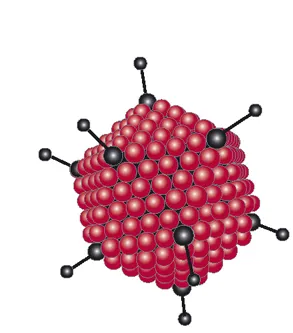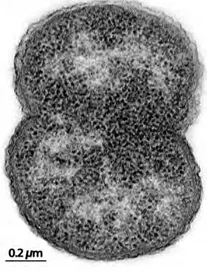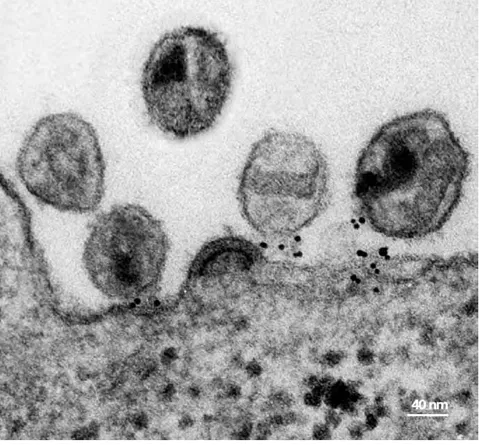
eBook - ePub
Biology of Disease
Nessar Ahmed, Maureen Dawson, Chris Smith, Ed Wood
This is a test
Buch teilen
- 600 Seiten
- English
- ePUB (handyfreundlich)
- Über iOS und Android verfügbar
eBook - ePub
Biology of Disease
Nessar Ahmed, Maureen Dawson, Chris Smith, Ed Wood
Angaben zum Buch
Buchvorschau
Inhaltsverzeichnis
Quellenangaben
Über dieses Buch
Biology of Disease describes the biology of many of the human disorders and disease that are encountered in a clinical setting. It is designed for first and second year students in biomedical science programs and will also be a highly effective reference for health science professionals as well as being valuable to students beginning medical school. Real cases are used to illustrate the importance of biology in understanding the causes of diseases, as well as in diagnosis and therapy.
Häufig gestellte Fragen
Wie kann ich mein Abo kündigen?
Gehe einfach zum Kontobereich in den Einstellungen und klicke auf „Abo kündigen“ – ganz einfach. Nachdem du gekündigt hast, bleibt deine Mitgliedschaft für den verbleibenden Abozeitraum, den du bereits bezahlt hast, aktiv. Mehr Informationen hier.
(Wie) Kann ich Bücher herunterladen?
Derzeit stehen all unsere auf Mobilgeräte reagierenden ePub-Bücher zum Download über die App zur Verfügung. Die meisten unserer PDFs stehen ebenfalls zum Download bereit; wir arbeiten daran, auch die übrigen PDFs zum Download anzubieten, bei denen dies aktuell noch nicht möglich ist. Weitere Informationen hier.
Welcher Unterschied besteht bei den Preisen zwischen den Aboplänen?
Mit beiden Aboplänen erhältst du vollen Zugang zur Bibliothek und allen Funktionen von Perlego. Die einzigen Unterschiede bestehen im Preis und dem Abozeitraum: Mit dem Jahresabo sparst du auf 12 Monate gerechnet im Vergleich zum Monatsabo rund 30 %.
Was ist Perlego?
Wir sind ein Online-Abodienst für Lehrbücher, bei dem du für weniger als den Preis eines einzelnen Buches pro Monat Zugang zu einer ganzen Online-Bibliothek erhältst. Mit über 1 Million Büchern zu über 1.000 verschiedenen Themen haben wir bestimmt alles, was du brauchst! Weitere Informationen hier.
Unterstützt Perlego Text-zu-Sprache?
Achte auf das Symbol zum Vorlesen in deinem nächsten Buch, um zu sehen, ob du es dir auch anhören kannst. Bei diesem Tool wird dir Text laut vorgelesen, wobei der Text beim Vorlesen auch grafisch hervorgehoben wird. Du kannst das Vorlesen jederzeit anhalten, beschleunigen und verlangsamen. Weitere Informationen hier.
Ist Biology of Disease als Online-PDF/ePub verfügbar?
Ja, du hast Zugang zu Biology of Disease von Nessar Ahmed, Maureen Dawson, Chris Smith, Ed Wood im PDF- und/oder ePub-Format sowie zu anderen beliebten Büchern aus Medizin & Medizinische Theorie, Praxis & Referenz. Aus unserem Katalog stehen dir über 1 Million Bücher zur Verfügung.
Information
chapter 1:
THE NATURE AND INVESTIGATION OF DISEASES
OBJECTIVES
After studying this chapter you should be able to:
- define appropriate terms associated with health and disease;
- give a simple classification of diseases;
- list the ways pathological investigations help in the diagnosis, treatment and management of diseases;
- discuss the clinical and analytical evaluations of laboratory tests
1.1 INTRODUCTION
Disease can be defined as any abnormality or failure of the body to function properly and this may require medical treatment (Figure 1.1). The scientific study of diseases is called pathology.
Every disease has a distinct set of features that include a cause, associated clinical symptoms and a characteristic progression, with associated morphological and functional changes in the patient. The presence of an abnormality on its own, however, does not necessarily indicate disease since the affected individual must also suffer from ill health. Health can be defined as an absence of signs and symptoms associated with any disease. This definition has limitations in that there are circumstances where individuals believe they are ill even though detectable indications of disease are not present. Conversely, there are individuals who believe they are healthy but on detailed examination are found to suffer from a serious disease. For this reason, the World Health Organization (WHO) devised the more appropriate definition of health as a state of physical, mental and social well-being and not merely the absence of disease. Currently there is considerable interest, particularly in developed countries, in promoting health by improving lifestyle and reducing mental and social factors associated with ill health.

Figure 1.1 A modern intensive care unit of a hospital.
Individuals differ in their physical appearance and also internally in the composition of the biological materials of which they are made. Differences between individuals are due to biological variation. Variation in values for measurable body features or biological substances (analytes) occurs for a number of reasons. Differences in the genotypes of individuals ensure that no two individuals are the same (other than identical twins). Biological variation arises due to differences in lifestyle, experiences, dietary and other factors as well as genes. There are also differences in physiological processes arising from bodily control mechanisms. For example, the concentration of blood glucose varies between individuals with diet, time of day and physical activity.
1.2 CHARACTERISTIC FEATURES OF DISEASES
Every disease has a number of characteristic features. These features allow diseases to be categorized and allow a better understanding of the disease, its diagnosis and management. A correct diagnosis should mean that appropriate treatment is given.

Figure 1.2 Schematic of an adenovirus (diameter about 70nm), which can cause respiratory infections.
ETIOLOGY
Etiology refers to the cause of a disease. Etiological agents can be endogenous, in other words originating from within the body, or exogenous, coming from outside the body. Endogenous agents include genetic defects and endocrine disorders, while exogenous agents include microorganisms such as viruses (Figure 1.2), bacteria (Figure 1.3) and fungi that cause infections, chemicals, physical trauma and radiation. Many diseases are said to be predictable and arise as a direct consequence of exposure to the causative agent. Other diseases are considered probable in that they may be a consequence of the causative agent but the development of illness is not inevitable. An individual can be infected with a pathogenic microorganism but the outcome of the disease may depend on other factors such as the nutritional and immune status of the affected person.
Some diseases have more than one etiological agent and may, indeed, be caused by a range of factors. Such diseases are said to be multifactorial in origin. Diabetes mellitus type 2, a disorder of carbohydrate, fat and protein metabolism, is believed to have a multifactorial origin involving several genetic, dietary and environmental factors (Chapter 7). Many diseases are of unknown cause and are said to be idiopathic. An example of this is hypertension, where more than 90% of cases are of unknown cause. The treatment of idiopathic diseases is restricted to alleviating the symptoms. Some conditions are caused by the effects of treatment and are called iatrogenic diseases (from the Greek word iatros, doctor). The treatment of some cancers with cytotoxic drugs, for example, can cause a severe iatrogenic anemia although they may be curing the cancer.

Figure 1.3 Electron micrograph of the bacterial pathogen, Neisseria meningitidis, a causative organism of meningitis (Chapters 2 and 3). Courtesy of Dr A. Curry, Manchester Royal Infirmary, UK.
Occasionally a disease of unknown etiology is more commonly found in populations with certain dietary, occupational or lifestyle conditions called risk factors. Smoking is a significant risk factor in the development of heart disease and lung cancer (Chapters 14 and 17). Some risk factors may be important in the development of the disease whereas others may make the individual more susceptible to disease. Predisposing factors are conditions or situations that make an individual more susceptible to disease. They include age, sex, heredity and environmental factors. For example, the immune system in a newborn is not fully developed and, as a consequence, babies are more susceptible to infections. However, during aging the immune system undergoes a progressive decline in function making the elderly also more susceptible to infections. Sex may also be a predisposing factor: men are more likely to suffer from gout than women whereas osteoporosis is more common in the latter.

Figure 1.4 Electron micrograph of HIV particles escaping from a cultured human cell. Courtesy of Dr. D. Robertson and Professor R.A. Weiss, Institute for Cancer Research, Royal Cancer Hospital, UK.
Some diseases increase the risk of developing others. Thus some conditions increase the risk of someone developing cancer and are said to be premalignant.This is seen in ulcerative colitis, an inflammatory condition affecting the large intestine that increases the probability of developing bowel cancer in sufferers. Some diseases predispose the patient to other conditions by allowing infectious agents, not normally pathogenic, to cause disease. This is seen in opportunistic infections where a decline in the immunological functions of an individual makes them susceptible to infections by microorganisms that are normally nonpathogenic. In acquired immunodeficiency syndrome (AIDS), the individuals infected with the human immunodeficiency virus (HIV), (Figure 1.4) have little resistance to infections by microorganisms, such as those responsible for causing pneumonia, as well as microorganisms such as the yeast Candida, which are part of the normal flora of the body (Chapter 2).
Diseases are often described as being primary or secondary. Primary may refer to a disease of unknown cause or idiopathic, whereas secondary is used to refer to a condition that arises from an existing disease. However, these terms are also often used to describe the stages of a disease. For example, in cancer the primary tumor is the initial tumor whereas secondary tumors arise following metastasis of the primary tumor to other tissues (Chapter 17).
PATHOGENESIS
Every disease has a pathogenesis that describes the development of the disease or, more specifically, how the etiological agent(s) acts to produce the clinical and pathological changes characteristic of that disease. Some examples of how diseases undergo pathogenesis include inflammatory reactions in response to harmful agents and carcinogenesis where the formation of tumors occurs as a result of exposure to carcinogens (cancer-inducing substances). Diseases have ‘natural histories’ that describe the typical patterns of how each disease usually progresses, its effects and its duration. The effects of the disease on the patient are referred to as morbidity. Occasionally the morbidity of a disease may cause disability that, in turn, may restrict the activities of the patient. The mortality of a disease describes its possibility of causing death. This is usually expressed as a percentage. Some diseases have a rapid, often severe onset that is described as acute. However, other diseases have a chronic onset and develop gradually over a relatively longer time. Thus acute renal failure is characterized by rapid deterioration of kidney function over a matter of days, while chronic renal failure develops over months or even years (Chapter 8).
Diseases rarely occur immediately following exposure to an etiological agent. In most cases, a period of time, the incubation period, must elapse before the disease becomes apparent. In carcinogenesis, this period may last several decades and is referred to as the latent period. With infectious diseases, the time between exposure and development of the disease is often characteristic of the infectious agent involved.
Diseases rarely occur immediately following exposure to an etiological agent. In most cases, a period of time, the incubation period, must elapse before the disease becomes apparent. In carcinogenesis, this period may last several decades and is referred to as the latent period. With infectious diseases, the time between exposure and development of the disease is often characteristic of the infectious agent involved.
MANIFESTATIONS OF DISEASES
The etiology of a disease and its pathogenesis produce clinical manifestations that include signs and symptoms of the disease. A symptom is an indication that a disease is present and something of which the patient complains, for example, nausea, malaise or pain (Table 1.1). A sign is something that the clinician specifically looks or feels for, such as redness or swelling of the skin, when examining the patient. Some diseases present with a subclinical stage where these signs and symptoms are not apparent, even though the disease is established and characteristic biochemical and cellular changes that are detectable by laboratory analysis of, for example blood or urine have taken place.
Clinical signs and ...